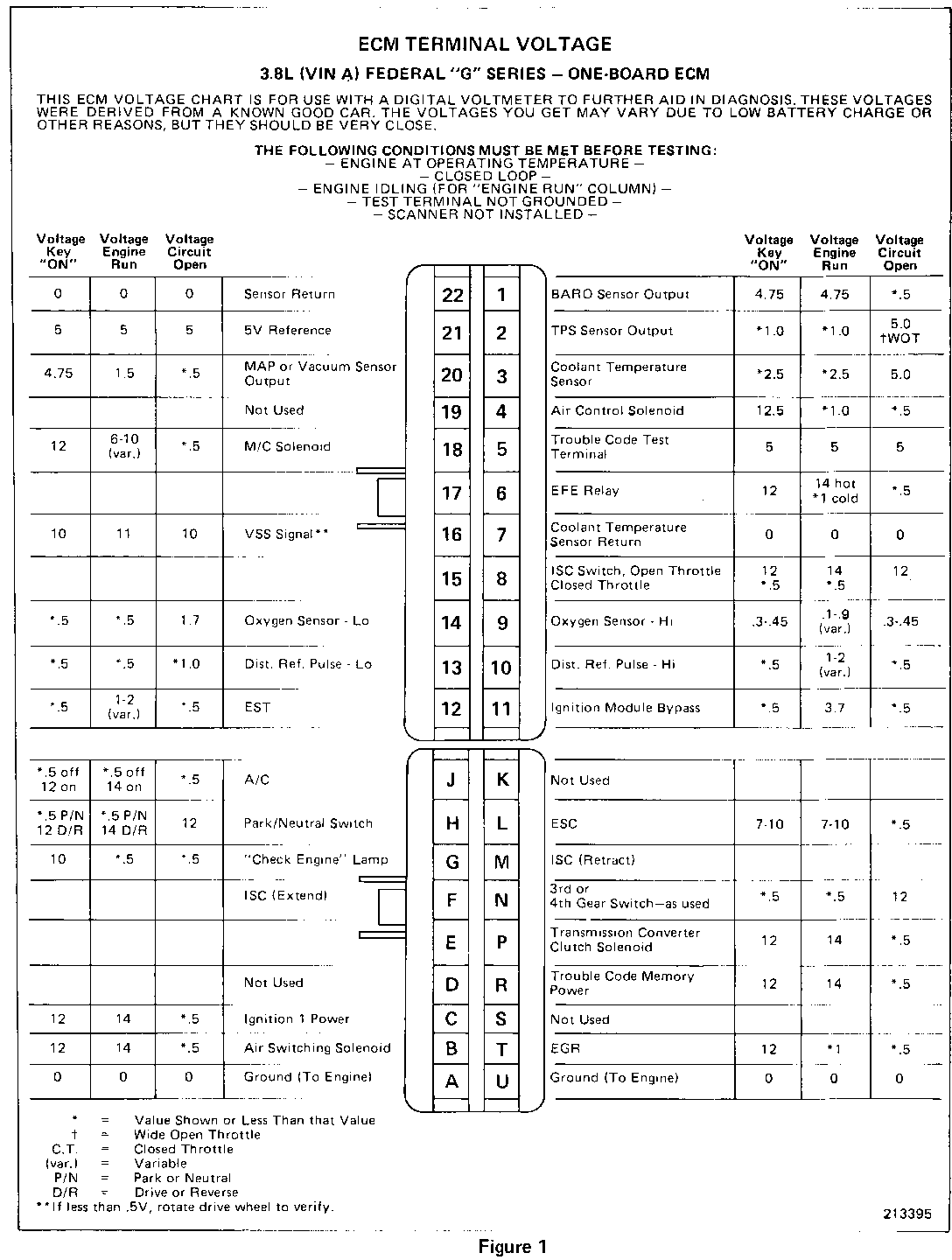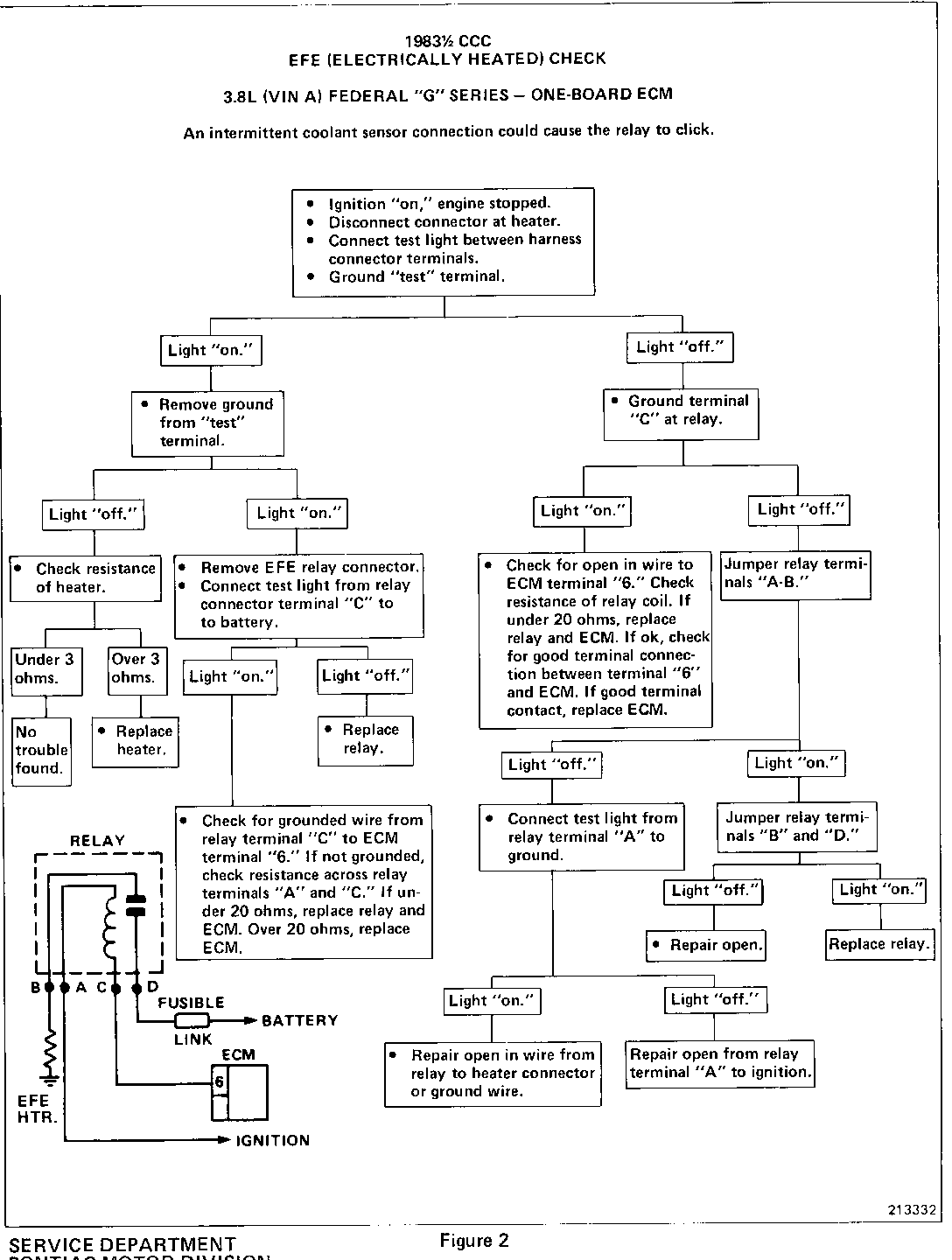PROD.CHANGE-2 TO 1 BOARD ECM SOME SCANNERS/WRONG DIAG.INFO.

Starting approximately April, 1983, a new single-board ECM (part number 1226153) was phased into production on Grand Prix and Bonneville models equipped with the 3.8L Federal (VIN Code "A") engine.
This new ECM puts all components on a single circuit board, first designed ECM's used two boards. All ECM functions remain the same but the two ECM's and PROM's are NOT interchangeable.
The service replacement ECM and PROM must be compatible with the broadcast codes on the production ECM, otherwise service replacement procedures remain the same.
Some diagnostic differences between the single-board and the two-board ECM's will result in the functions of some ALCL scan tools being unusable; the changes are in the Mixture Control Solenoid duty cycle (dwell) readings, oxygen sensor voltages, and knock retard modes.
Mixture control duty cycle readings when using the ALCL tool will read 0 degrees at idle and 60 degrees at part throttle; if these readings are obtained, the ALCL tool is unusable in this mode and will require the use of a standard external dwell meter to obtain the correct dwell readings.
Oxygen sensor voltages up to 1.4 volts may be seen on the ALCL tool when a full rich exhaust condition exists. Previously, 1.0 volt maximum readout was seen.
Knock retard mode will provide readings on the ALCL tool, however, direct degrees of retard will not be indicated. Counts will be seen indicating the electronic spark control is operating, but these figures are not direct degrees of timing.
Figure 1 (shown on the reverse side) provides revised ECM terminal voltages used with the single-board ECM.
Figure 2 (shown on page 3) is the revised electrical EFE Diagnostic ECM application.


General Motors bulletins are intended for use by professional technicians, not a "do-it-yourselfer". They are written to inform those technicians of conditions that may occur on some vehicles, or to provide information that could assist in the proper service of a vehicle. Properly trained technicians have the equipment, tools, safety instructions and know-how to do a job properly and safely. If a condition is described, do not assume that the bulletin applies to your vehicle, or that your vehicle will have that condition. See a General Motors dealer servicing your brand of General Motors vehicle for information on whether your vehicle may benefit from the information.
